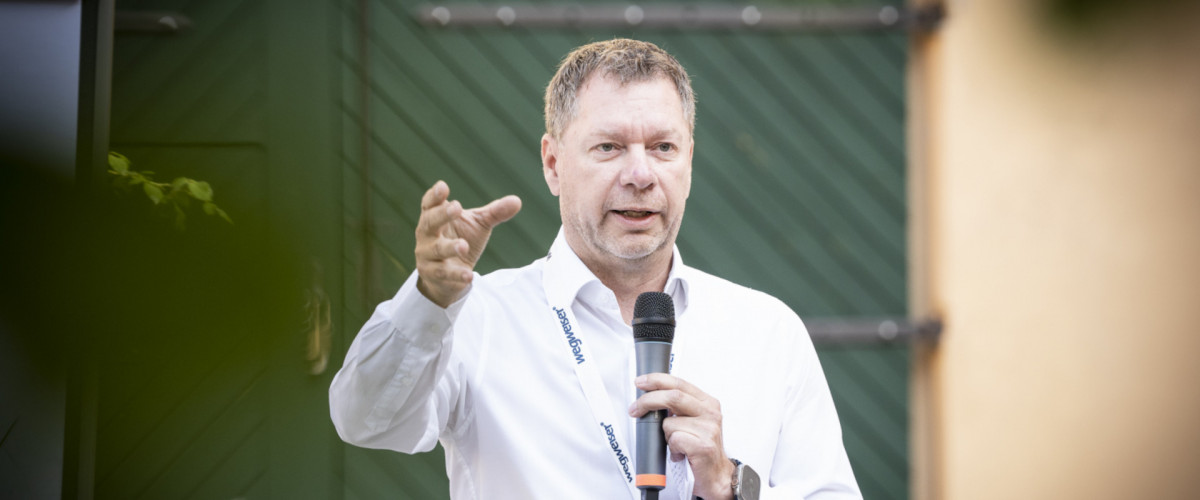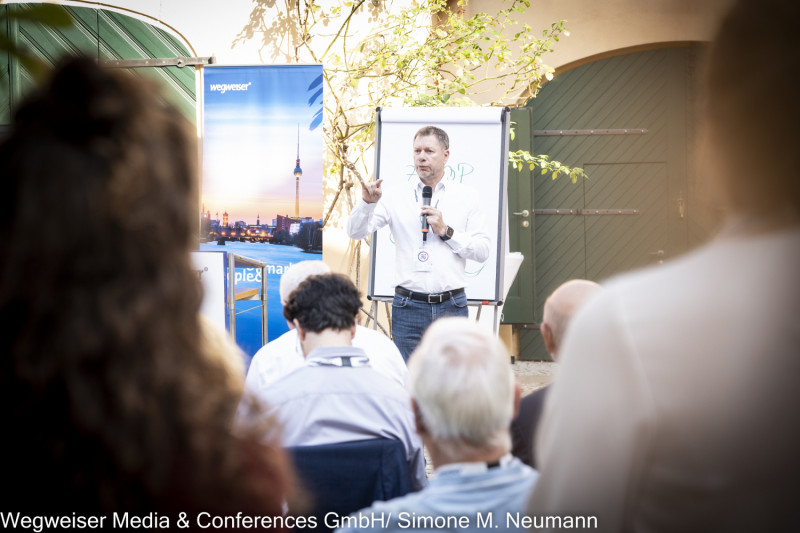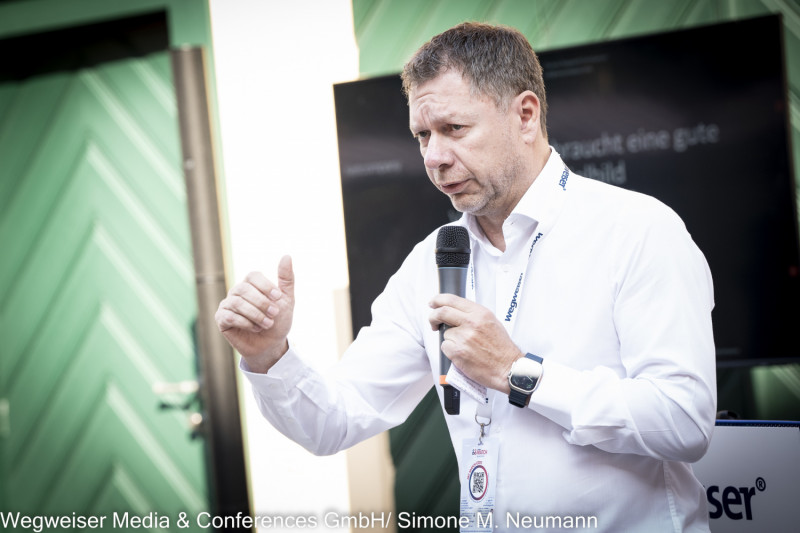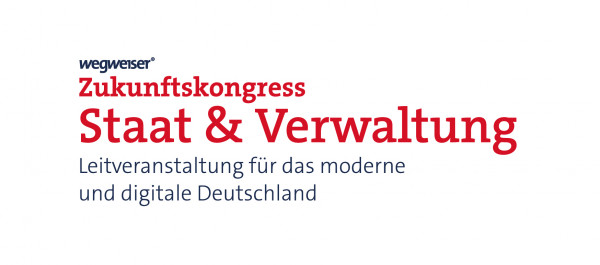Verwaltung der Zukunft: Mr. Christiansen, could you introduce yourself and Netcompany to our German readers?
Thomas Christiansen: My name is Thomas Christiansen and I’m a partner at Netcompany. We are one of the largest government ITC companies in Europe, specializing in systems for all levels of government—local, regional, and federal. We provide a wide range of solutions, including management systems, data systems, reporting tools, and communication systems, essentially covering all the key areas that governments rely on. Before joining this company, I was the CEO of a government-owned company in Denmark, where I led the digital transformation for local governments in partnership with the federal government.
VdZ: You gave an opening speech at the 3. ZuKo-THINKTANK, presenting "What makes the digital government successful in 2030?". Could you summarize what your presentation was about?
Christiansen: It was a brief 10-minute talk focused on what will make digital government successful by 2030. I highlighted a few key points that I believe are game changers for government digitalization. First, I emphasized the importance of a mindset that prioritizes citizens and businesses, ensuring that everything we do creates value not only for the government but also for the public and businesses.
The second point I made was the need for a single digital ID. It’s crucial to have one unified ID rather than multiple, making it easier for citizens to use government services without juggling multiple passwords and IDs.
Next, I discussed the importance of building seamless service journeys for citizens. This means connecting services so they flow together without disruptions—for example, when someone applies for benefits or a loan, it should all happen in one smooth process without unnecessary steps. In Denmark, this is done using a communication infrastructure, and I’m seeing more governments adopt similar approaches.
The last point was about standardizing infrastructure and data use across government sectors. We need agreed-upon standards for how data is used, especially in areas like healthcare and social services, to allow services to integrate more easily. I talked about open data platforms which can be used by both public and private parties.
I also demonstrated two examples. The first was the new EUDI wallet, which allows citizens to carry their personal data—like a driver’s license, passport, or tax return—in one place and share it with the government when needed. This technology will help accelerate the digital transformation. The second example was Denmark's digital communication infrastructure, where citizens can access all government communications in one place and perform tasks like making payments or sending documents to the government, streamlining the entire process. This communication infrastructure acts as the glue that holds the public sector together.
VdZ: What would be a specific example of such a value case?
Christiansen: Right now, we’re rolling out a communication platform in Scotland, and one case involves cancer screening. When letters are sent by mail, they can get lost or arrive after appointments. With digital communication, citizens receive the info directly and can input their details online, making it easier to attend appointments without extra hassle. For citizens, it’s more convenient, and for the government, it saves costs and allows doctors to access the information in advance, streamlining the process.
VdZ: Can you explain why your digital communication system works so well?
Christiansen: 92% of citizens and 100% of companies in Denmark use Digital Post. It’s important to know that its use has been mandatory for companies since 2013 and for citizens since 2014. However, even before it became mandatory, most citizens were already using it because it’s so easy to use. Digital Post offers two-way communication, allowing citizens to receive and respond to government messages. Since the messages are sent in a structured data format, it’s clear where they need to go, who they’re for, and what the subject is, which speeds up case processing.
It’s also heavily used for communication between different levels of government—local, regional, and federal—making it easier to manage various data flows. For citizens, the key advantage is how easy and convenient it is. All your government communication is stored in one place, so if you need to find a letter from years ago, like something about property taxes, you can easily access it. We’ve also integrated interactive features; for instance, if a caseworker needs specific information, they can send a form with just the required fields, and citizens can fill it out directly in the message. It’s user-friendly and makes interactions between citizens and the government much more dynamic and efficient.
For citizens, the key advantage is how easy and convenient it is. All your government communication is stored in one place.
VdZ: By making it mandatory, did you receive any backlash or were there any issues with exclusion?
Christiansen: We still maintain an analog channel in Denmark. Out of a population of 6 million, around 200,000 people still receive their letters in analog form. There wasn’t much backlash when we made this shift because we’ve been using digital communication since 2001, so people have had time to adapt—and they actually prefer it. After all, most of the communication they receive from other sources is already digital, so it made sense for the government to follow suit.
We also take steps to support citizens in making the transition. For instance, people can receive training at their local citizen centres, or parents can give their children consent to help manage their digital mailbox. We focus heavily on digital inclusion to ensure that everyone can use the system.
VdZ: You mentioned during the THINKTANK that the government was basically forced to implement a successful digitalisation. Can you elaborate a bit more on that?
Christiansen: It really came down to balancing resources and budget. What we also saw was that demographic changes required more support in certain government sectors, particularly in social areas like care for the elderly and children. We simply didn’t have the budget to maintain everything. The choice was clear: we needed to close some of the existing channels. If you keep all channels—digital and analog—open at high volumes, there are no real savings. So we had to push more people towards the digital channel, which is more cost-effective.
At the same time, our goal was to maintain a high level of service. I believe in some cases, we’ve actually improved service levels because people no longer have to physically visit government offices.
But ultimately, it was a budget issue. If we didn’t make this shift, we’d have to cut back on services—fewer schools, fewer care homes, and so on which was communicated transparently.
VdZ: Despite its problems and slow speed, would you also say there is something positive about the German public sector?
Christiansen: The public sector in Germany is really well-organized, with strong processes and platforms in place. Compared to many other countries, you're ahead in terms of structure and efficiency. If there’s a willingness to invest and adapt, the potential for digital transformation is definitely within reach. From an organizational standpoint, Germany is in a strong position, especially with how laws are written and the way politicians are approaching the issue. What's also encouraging is that I'm seeing a more positive shift towards digitalization in the public sector here.
If there’s a willingness to invest and adapt, the potential for digital transformation is definitely within reach.
Download Section: Presentation
For VdZ+ users, the presentation introduced by Mr. Christiansen is now available in the following download section. If you do not yet have access to VdZ+, you are welcome to register for free.
Exklusiver Inhalt für unsere VDZ-Plus-Leser
Loggen Sie sich hier ein oder
Registrieren Sie sich als VDZ-Plus-Leser.









